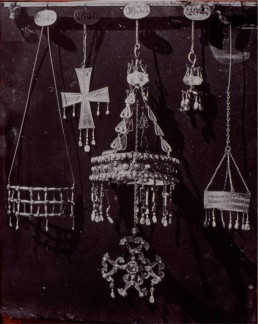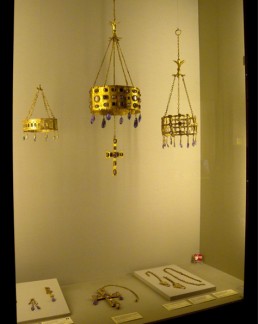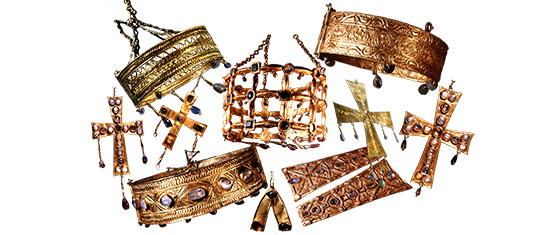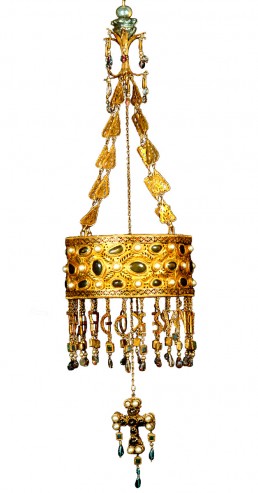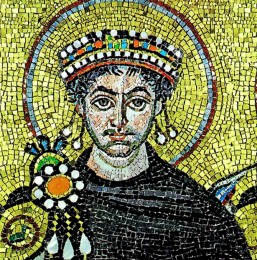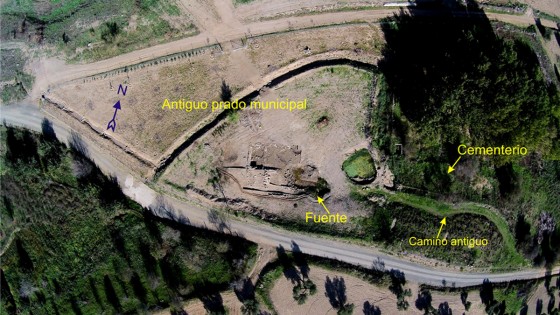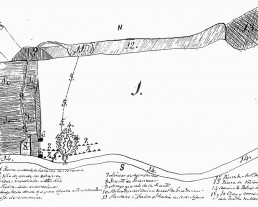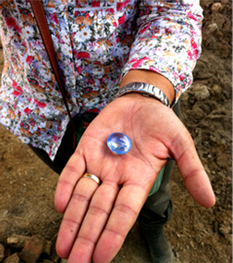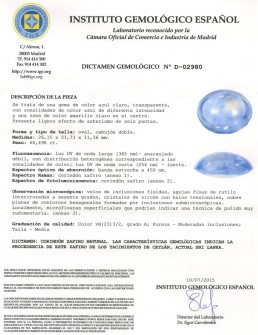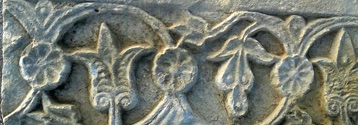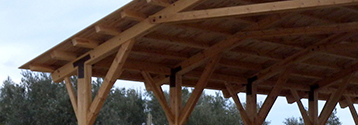According to the statements made by the discoverers, Francisco Morales and María Pérez, the discovery was by chance on the 25th of August 1858, when they were on their way to Toledo, as they passed through the location of the Guarrazar spring. Then, they saw a shiny object among the slabs uncovered by the torrential rains of a great storm the day before.
The treasure that they found, consisted of a set of gold votive crowns, precious stones, pearls, nacre, glass, etc., besides crosses, goblets, and other objects also made of gold and gems that were hidden inside a mortar chest whose dimensions were 70 x 70 cms and more than a metre deep. Next to the main treasure, another one of less importance was found by a gardener, Domingo de la Cruz, who owned an orchard near Guarrazar spring and that had seen the couple to dig up the treasure at night.
As news of discovery of the treasure spread, many searches of potentially missing pieces were carried out intensely. Judging by the number of pieces handed over by Guadamur residents, it seems that these searches were successful. However, according to the poor state of the necropolis where the treasure was located, described by José Amador de los Ríos, it is clear that there was a significant loss of archaeological heritage.






